World Bank in India













A few years ago, the Peren District Hospital in India’s northeastern state of Nagaland was in a poor condition. It was dusty, had shattered floors and there were no handwashing or toilet facilities for patients. There was no operation theatre, forcing emergency services to be performed in the corridors. The labour room was so congested that Dr Dietho Koza, anaesthesiologist and critical care specialist, recalls performing Caesarean surgeries under torchlight.
Today, with World Bank support, the hospital is a changed place. It now has a well-equipped labour room and a designated corner for the care of newborn babies. An improved drainage system has reduced stagnant water and biomedical waste is now disposed of properly, making the hospital safer for the staff and patients, as well as for the environment.
As a result, in just four to five months, the hospital delivered around 56 babies, compared to just 50 babies delivered in an entire year.
Bringing health services to Nagaland’s people, especially to those in far-flung regions, has long been a challenge. Around two-thirds of the state’s 2.2 million people live in rural areas where road connectivity is poor, electricity is unreliable, and water supply and sanitation are inadequate. The shortage of specialist physicians and skilled healthcare workers leads to few deliveries in health facilities - the lowest in the country. Immunization rates are also low, and it has been difficult to address child malnutrition and mortality.
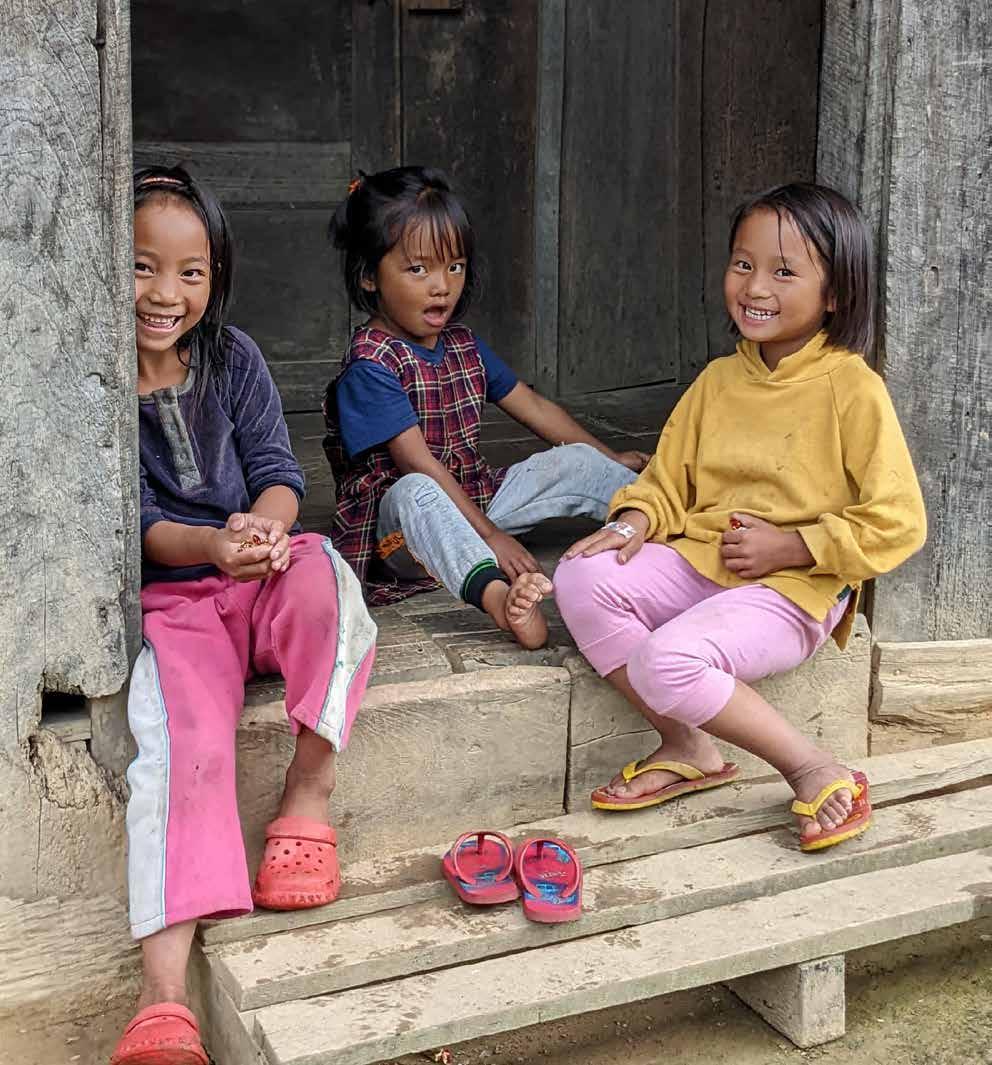
But this is changing now. Since the World Banksupported Nagaland Health Project started in 2018, the functioning of 188 health centres across the state has improved, with more than 8,36,000 people now receiving some form of health service.
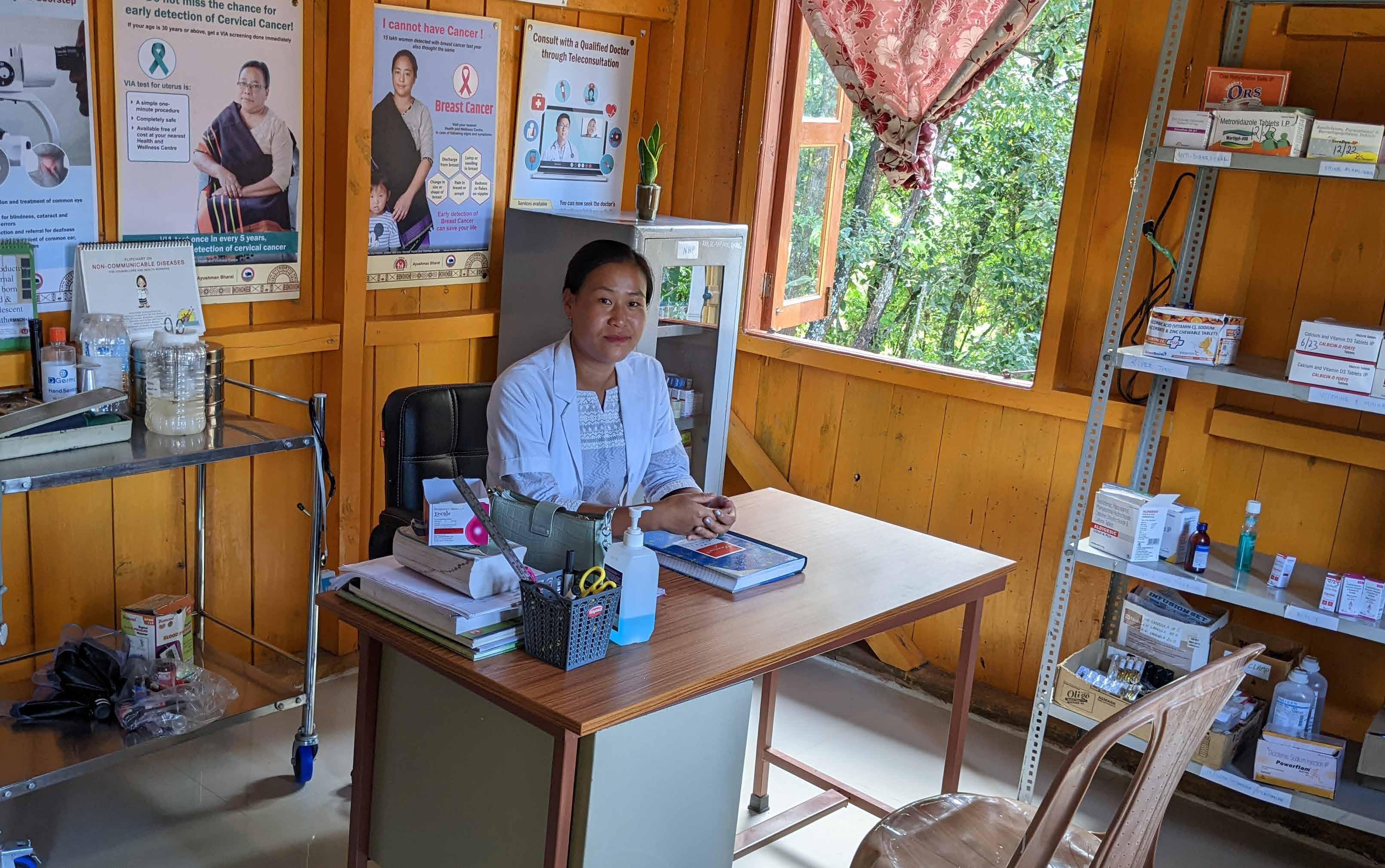
For instance, the Primary Health Center (PHC) at Thonoknyu - one of the state’s remotest facilities, over 260 kms from the capital Kohima - was rarely visited by patients. Now, the old, dilapidated building has been refurbished, and new water and sanitation facilities installed, leading to a notable increase in patients visiting the center.

“Many changes have happened, like the labor room, rainwater harvesting reservoir, improved drainage and biomedical waste management systems,” described Pehie, a pharmacist at the PHC. “Now, many more people come to us for treatment.”
An important step forward in improving Nagaland’s healthcare was empowering local communities to take ownership of their health services by revitalizing the state's pioneering 2002 Communitization Act.
Under the Project, the village health committees were reconstituted, and it was made mandatory to have a woman as a co-chair, which helped
in strengthening the focus on maternal and child health. Today, the 500 or so village health committees that have been formed across the state have a woman as a co-chair.
“The project taught us that health services are not only the responsibility of the government but the shared duty of villagers too,” said Mrs. Zhito, co-chair of the committee in Mehuli village.
The village, which has a female population of just over 2,500, encouraged pregnant women to visit the facility for check-ups and immunizations by distributing carefully chosen gifts to them, such as flasks, eggs, and baby blankets, giving them a sense of support from the community.
Yaongyimsen village, on the other hand, adopted another innovative approach when it introduced door-to-door visits with food packages for the underprivileged and elderly.
“Taking up the role of co-chair has helped me become more empowered and aware,” said Ms. Tatongkala, who introduced the idea when she was elected as co-chair. “And it has furthered my learning about women’s health issues.”
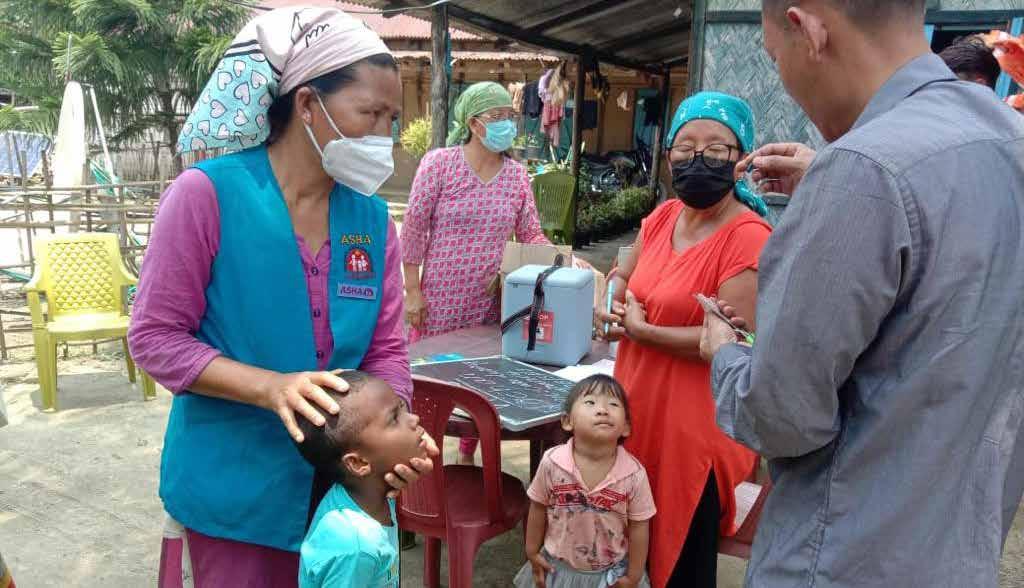

To meet the shortfall in health specialists, the functioning of nursing and midwifery schools in five cities was improved, with faculty members being trained in modern management practices. This helped the faculty to improve their teaching methods and adopt innovative approaches to nursing education. Previously, the four nursing schools in the state operated at less than half their capacity. As a result of this initiative, seating capacity in five nursing schools has been expanded to accommodate the growing number of students, significantly boosting enrolment. Additionally, quality of services in terms of infrastructure, furniture, equipment and learning aid has also been increased in select nursing schools and paramedical institutes of Nagaland.
To solve the challenge of erratic electricity supply, the project helped harness the sun as a cost-effective and reliable option, especially in the remote areas.
Now, 175 health facilities have solar installations, ensuring stable power supply for surgeries and other procedures.
“The availability of 24x7 power supply has enabled the smooth delivery of health services even when there is no grid supply,” said Dr. Tumchobeni, the Medical Superintendent at the district hospital in Wokha. This shift has not only cut fuel costs but has also led to a 1,240-tonne reduction in carbon dioxide emissions.
“Patients now receive uninterrupted services with the help of 24x7 electricity backup from the solar plant, enabling electronic machines to run and vaccines to be stored in the refrigerator. It has been a great relief during deliveries.”
Vizonuo Thaprii, Chief Health Officer at
the Peren District Hospital.

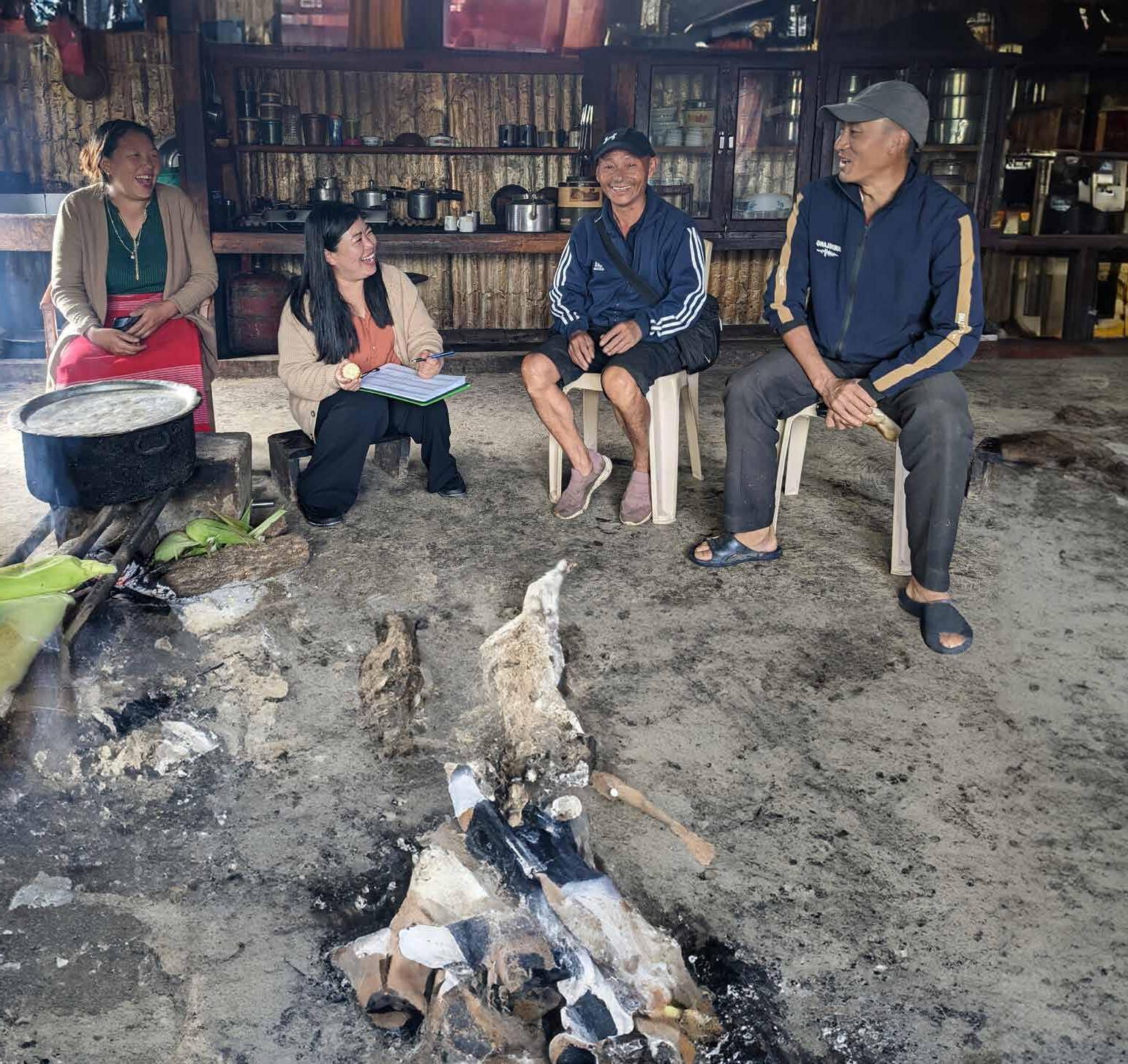
In addition, patients no longer need to travel long distances for simple medical tests. The lab at the Chunlikha PHC, for instance, has received equipment that makes medical tests possible at the facility. The lab, which serves 10 villages and over 15,000 people now gives results on the day of the test, saving patients time, effort, and expense in travelling 58 kilometres to Kohima.
"I go to the PHC for a kidney function test and liver function test every six months; these are done free of cost,” said Senlo Kath, an 80-yearold patient of hypertension and diabetes.
To tackle the non-availability of water, the project introduced rainwater harvesting. Around 70-80 lakh litres of water are now collected every year which, along with other water storage systems, meet the needs of 176 health facilities across the state, helping improve handwashing and sanitation.
The introduction of scientific biomedical waste management at district hospitals in the state has also made a difference.
“These facilities have transformed the way we handle medical waste and have played a huge role in reducing infection among the handlers and the larger population,” said Dr Senilo, Medical Officer at Tuensang District Hospital. In fact, the hospital at Tuensang was awarded for being the cleanest and most eco-friendly hospital in the state.
The project has also supported inventory management of drugs and medicines at all warehouses and health care facilities up to the PHC level. This inventory can be viewed at the state level and by the public, helping plan drug supply and preventing stock-outs. A similar management system has been created for medical equipment up to the PHC level, which includes physical verification, monitoring, and maintenance.
Through these comprehensive efforts, the World Bank supported Nagaland Health Project has significantly transformed healthcare in Nagaland, ensuring better health outcomes and an improved quality of life for the people.

In Nagaland, the health indicators for pregnant women are among the lowest in the country.
Institutional deliveries increased from 33% to 46% (NFHS 4 to 5);
Antenatal care increased from 15% to 50%
Patients using OPD services increased by over 38%: From 8,81,480 in 2015 to 12,21,882 in 2023 (HMIS*)
Birth registration increased from 0% to 78%
In 2013-14, only 3.6% of pregnant women received full antenatal care, compared to the national average of 20%.

Only 18.6% of pregnant women delivered their babies in a health facility, compared to the national average of 79%.
Immunization increased from 40% to 76%
Registration of pregnant women to health facilities increased from 49% to 77%;
People who have received essential HNP services in targeted areas increased from 34,737 in 2018 to 3,64,025 in 2023

Auguste Tano Kouamé
An efficient logistics sector is pivotal for India to become a globally preferred business destination. It reduces manufacturing costs, makes businesses more competitive, and links them with global value chains, boosting the Make in India initiative. The sector is also one of India’s largest employers, employing over 22 million people.
In 2023, India ranked 38 out of the 139 nations in the World Bank’s Logistics Performance Index (LPI), up six places from the previous rankings in 2018. India has now set the ambitious goal of ranking among the world’s top 25 nations by 2030, bringing logistics costs down to the equivalent of less than 10% of GDP.
Decisive actions have been taken to develop a logistics backbone for the country. The national highways have expanded at an unprecedented rate, connecting ports to hubs of economic activity. The railways too have taken a quantum leap by building electrified freight-only corridors that link manufacturing centers to ports on the eastern and western coasts. Longdefunct inland waterways are being rejuvenated. Many routes — including National Waterway 1 — have been strengthened, and efforts are on to move cargo through new river-to-sea connections.
Over 22 million people are employed in the logistics sector in India.
The Pradhan Mantri Gati Shakti National Master Plan and the National Logistics Policy are key initiatives. The PM Gati Shakti initiative is breaking down the siloed approach to the planning and execution of multimodal infrastructure projects by integrating data from 16 ministries and departments onto a single Geographic Information System-based platform.
Port and customs services have also seen significant improvements. Cargo is now cleared much faster and containerized cargo can be tracked digitally. Today, it takes about a day for a ship to turn around at the Nhava Sheva (JN) Port in Navi Mumbai. This is almost at par with Singapore, a world leader in logistics, which takes just 0.75 days. Gujarat has been ranked the top performer among coastal states in India, and West Bengal is taking advantage of its strategic location by placing a new thrust on logistics infrastructure and services.
Even so, new technologies such as big data and artificial intelligence can be put to greater use to fulfil the vision of a nationally integrated, cost-effective, reliable, and digitally enabled logistics ecosystem.
First, the PM Gati Shakti platform can be overlaid with information on trade flows across the country. This will enable planners to mine the plethora of data available from the Goods and Services Tax Network and E-Way bills to see where infrastructure needs to be improved.
Second, the multimodal logistics parks planned with connectivity to railway corridors can serve as warehouses and data centers, attracting private sector service providers and investors, while giving manufacturers last-mile connectivity.

Third, the country’s youth will need to be equipped with the skills needed by this dynamic industry. Women too can benefit from new jobs, especially in softer skills such as packaging, sorting, and warehouse management. The Logistics Sector Skill Council is training workers in newer technologies to help them become full-fledged logistics professionals.
The World Bank has been supporting India through a variety of rail, road, and inland waterway projects. It is also helping the country increase digitization and improve trade services, among other measures, and supporting the development of skills for this rapidly evolving industry.

India’s push to improve its logistics performance will not only improve its trade competitiveness, but will also increase jobs, and enable the country to emerge as a logistics hub for the region and beyond.
Auguste Tano Kouamé is the World Bank's Country Director for India.
This Opinion piece first appeared in The Financial Express on July 17, 2024.
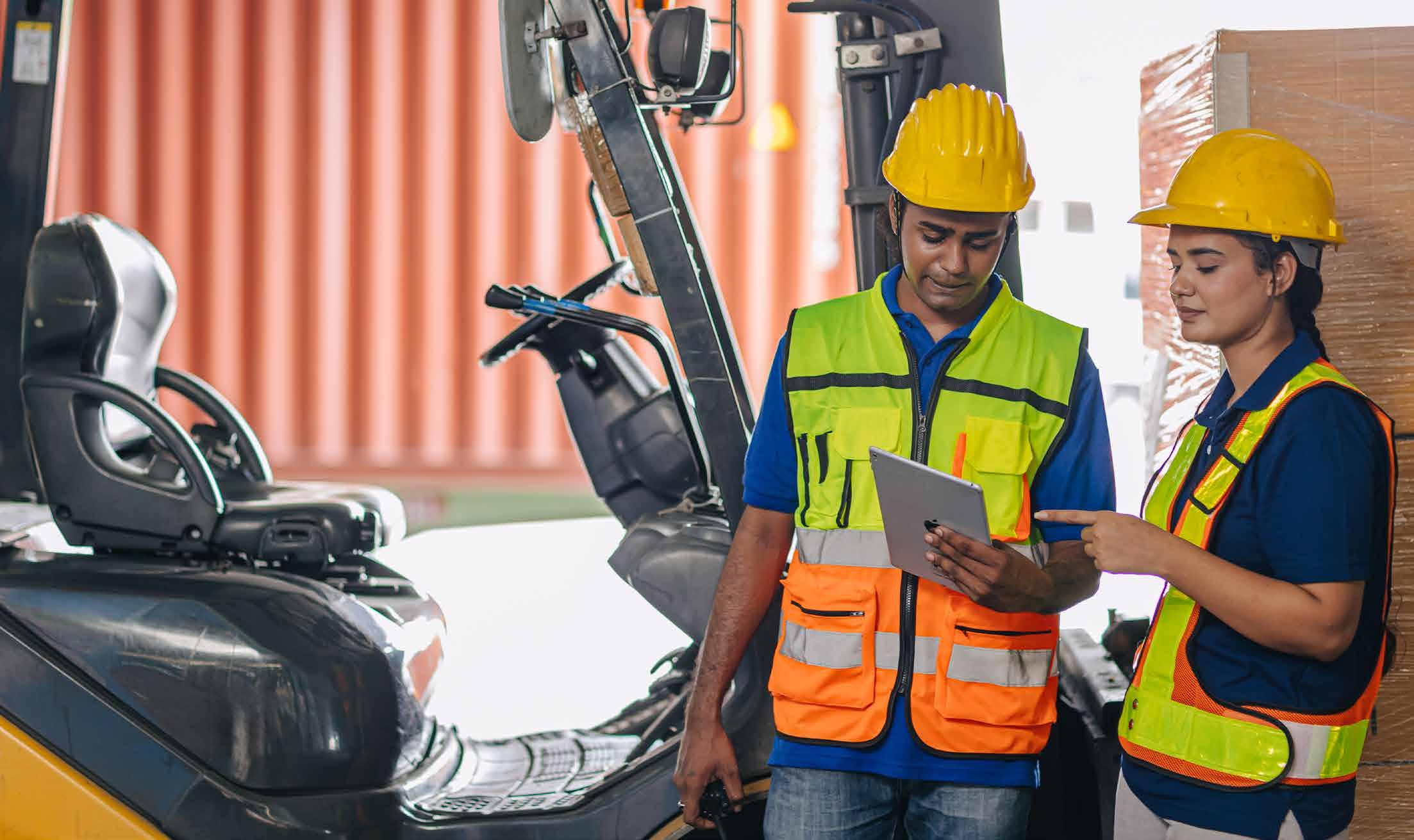
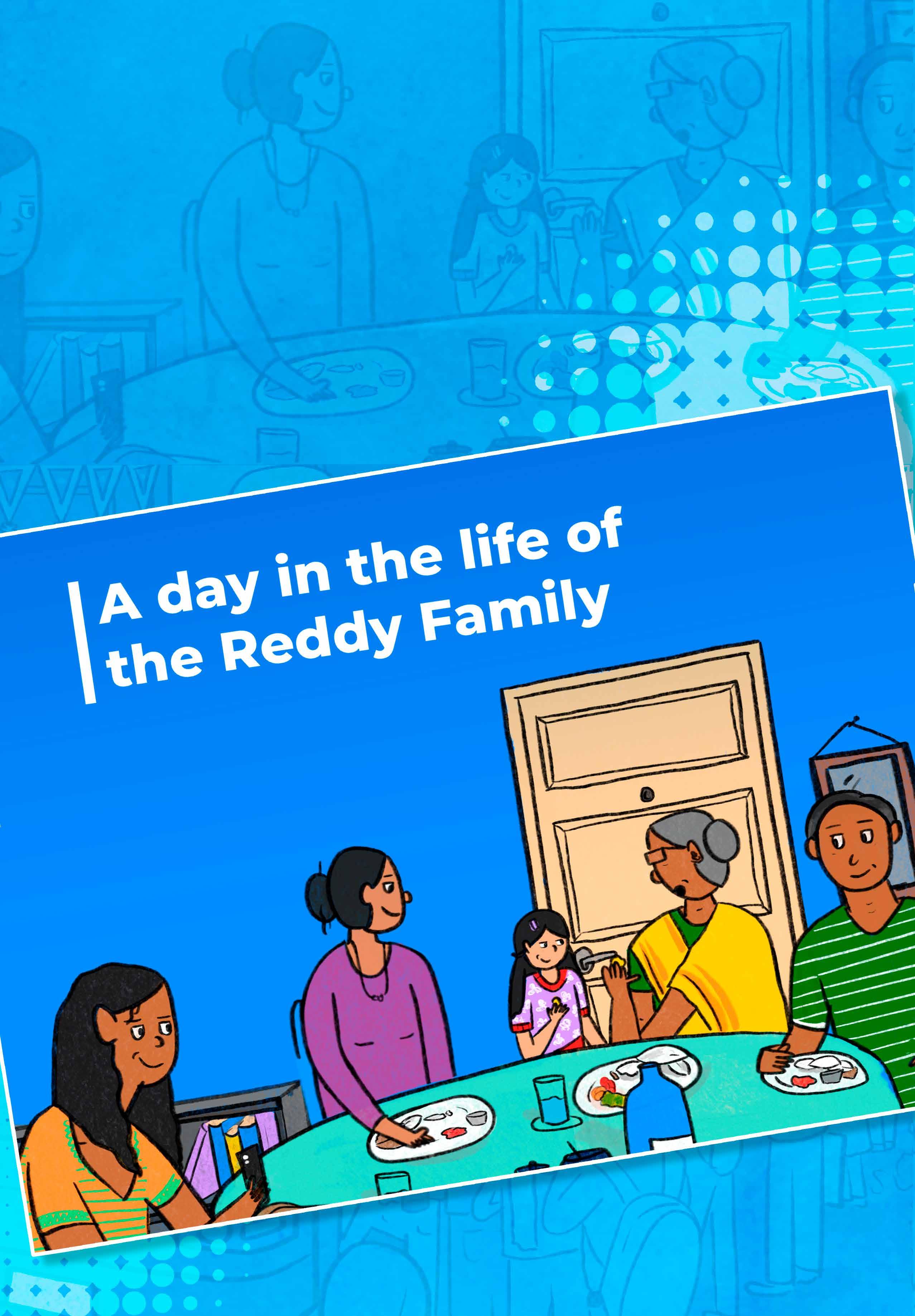




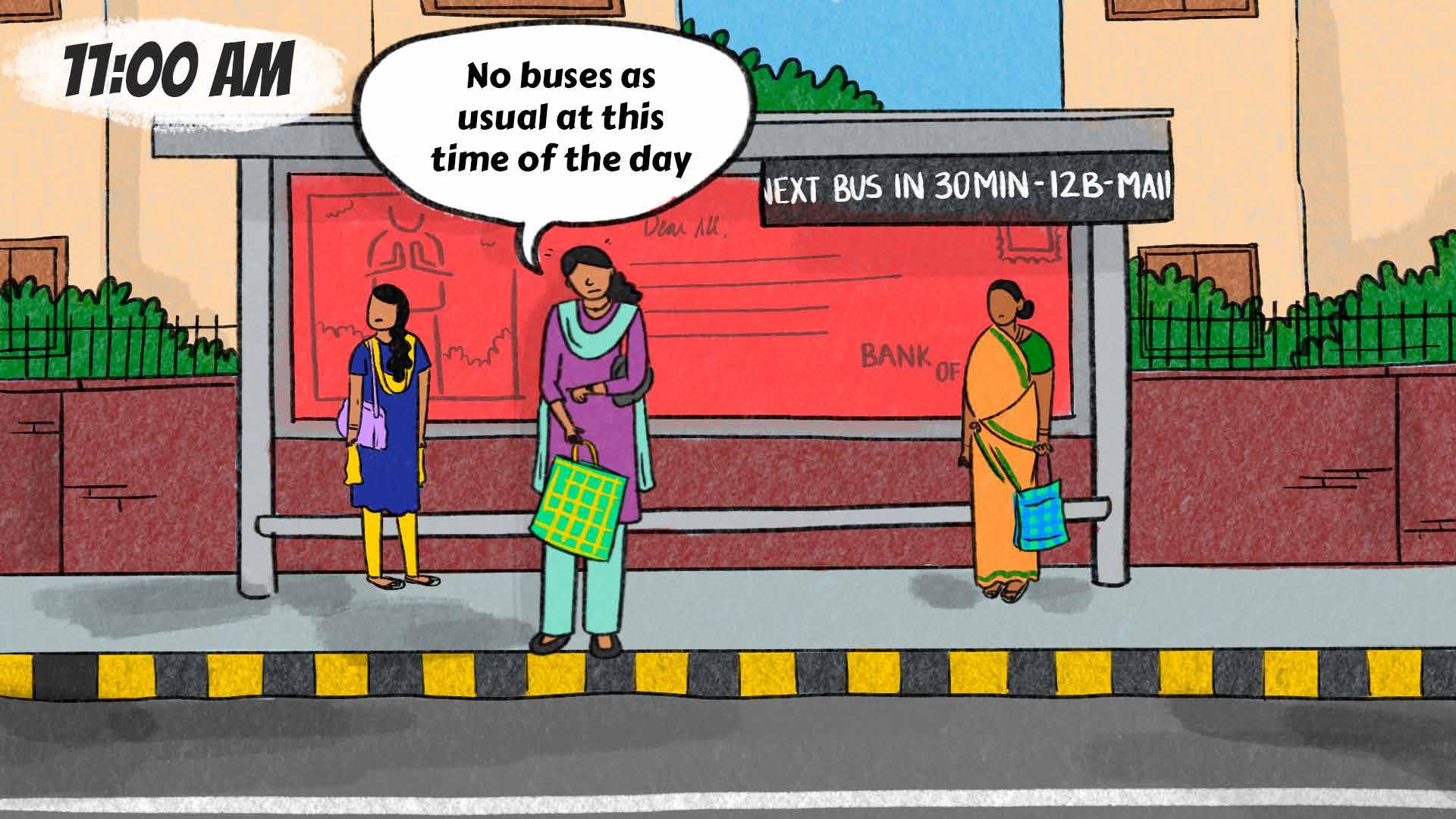
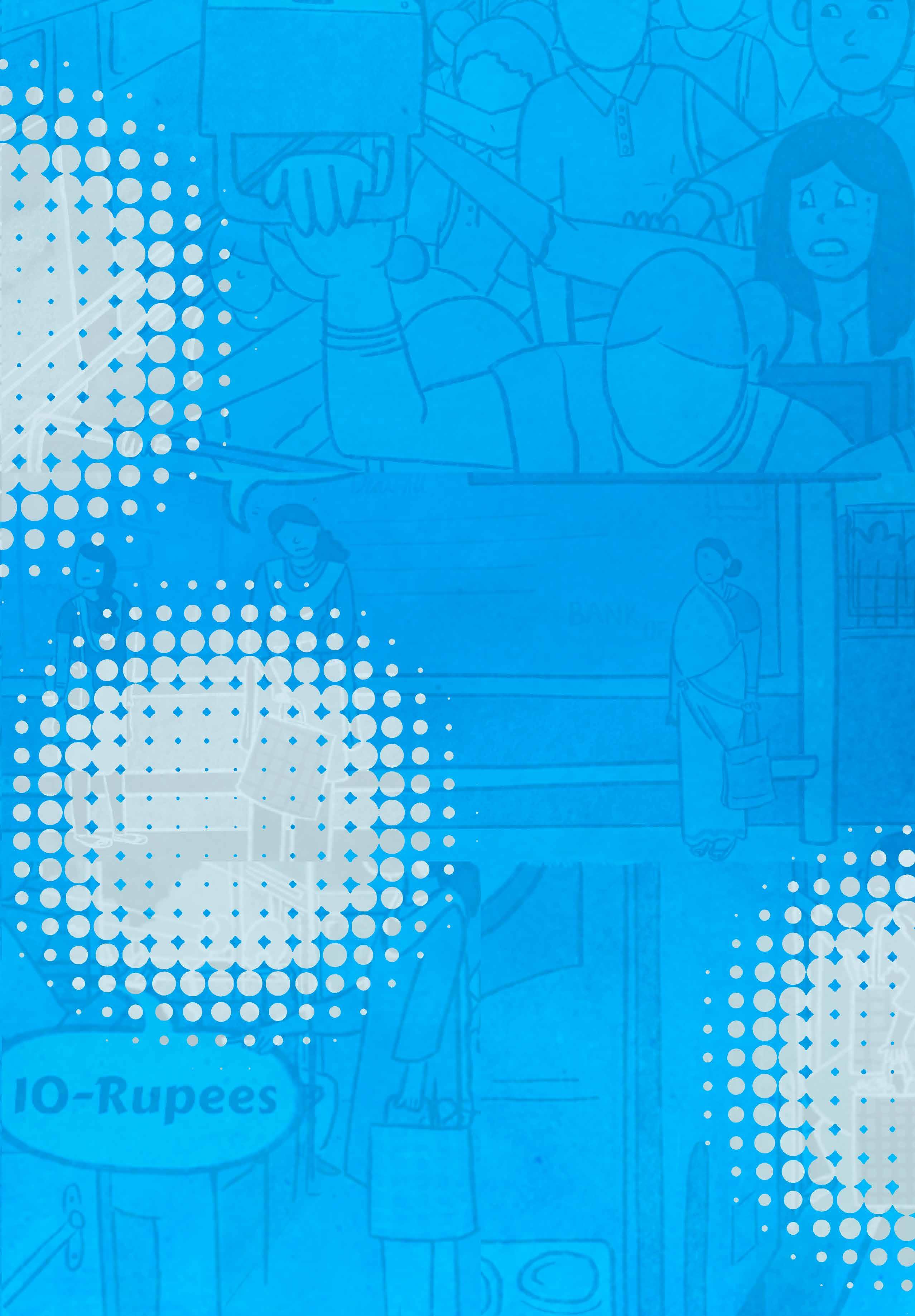



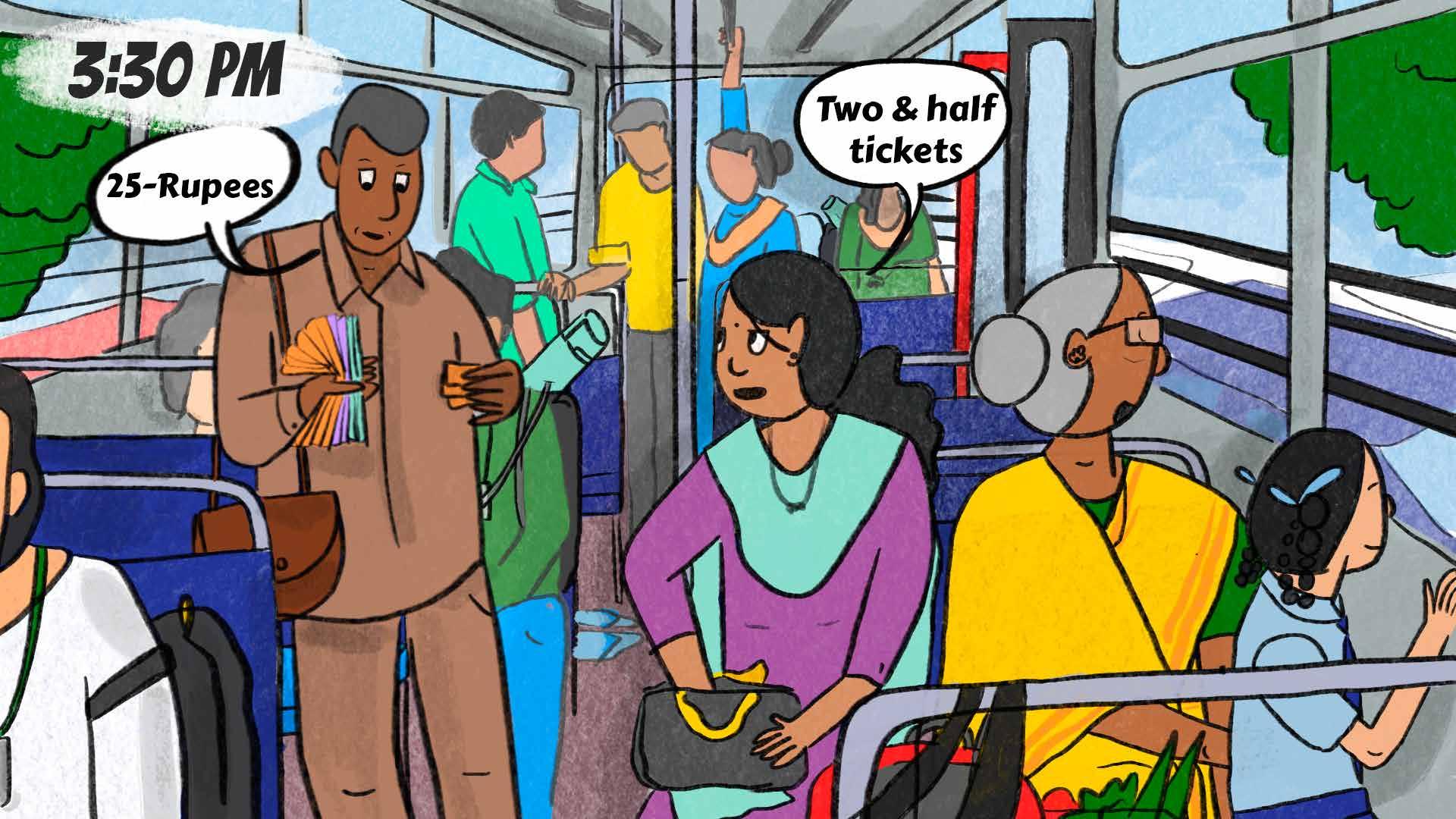


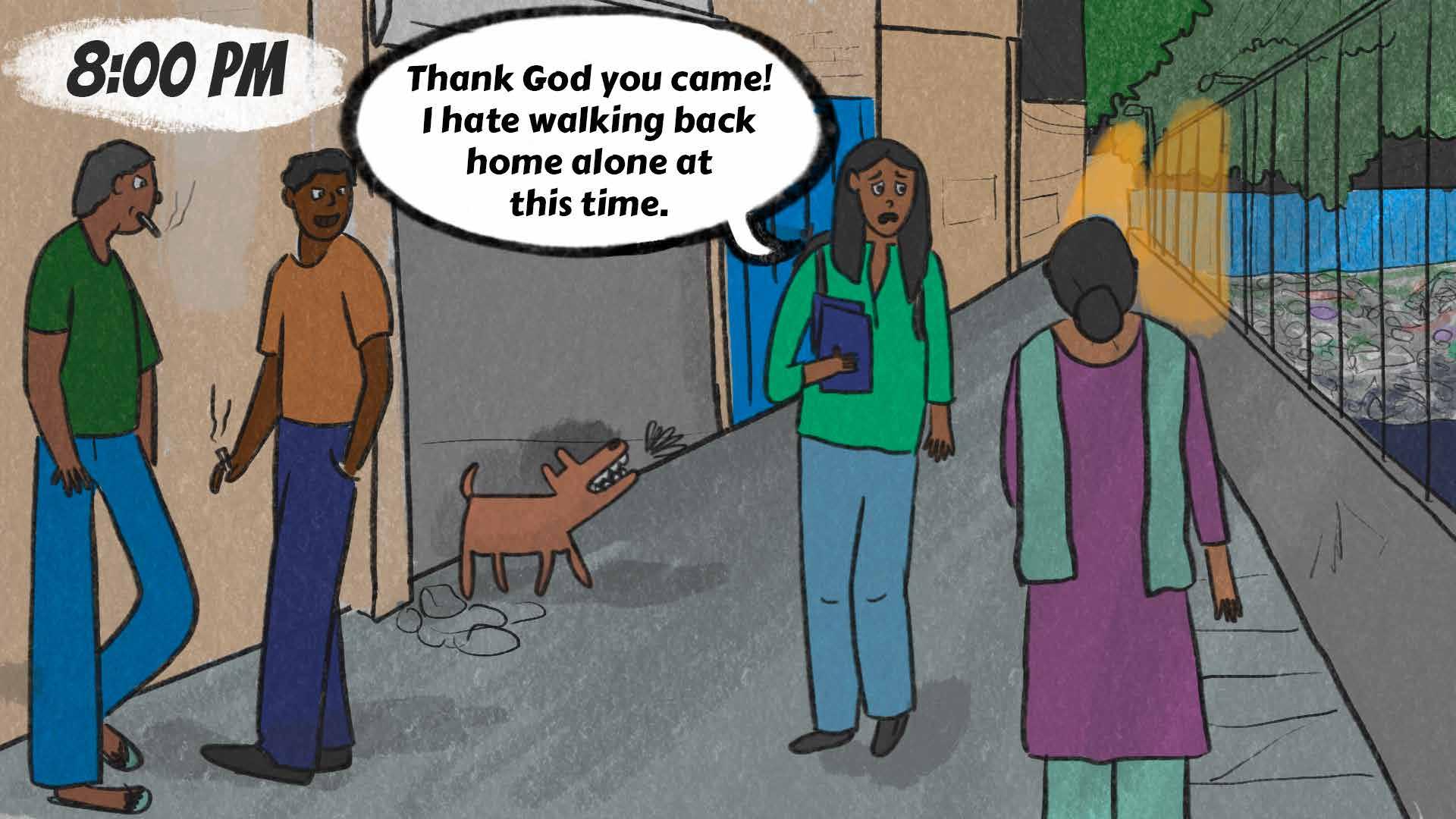
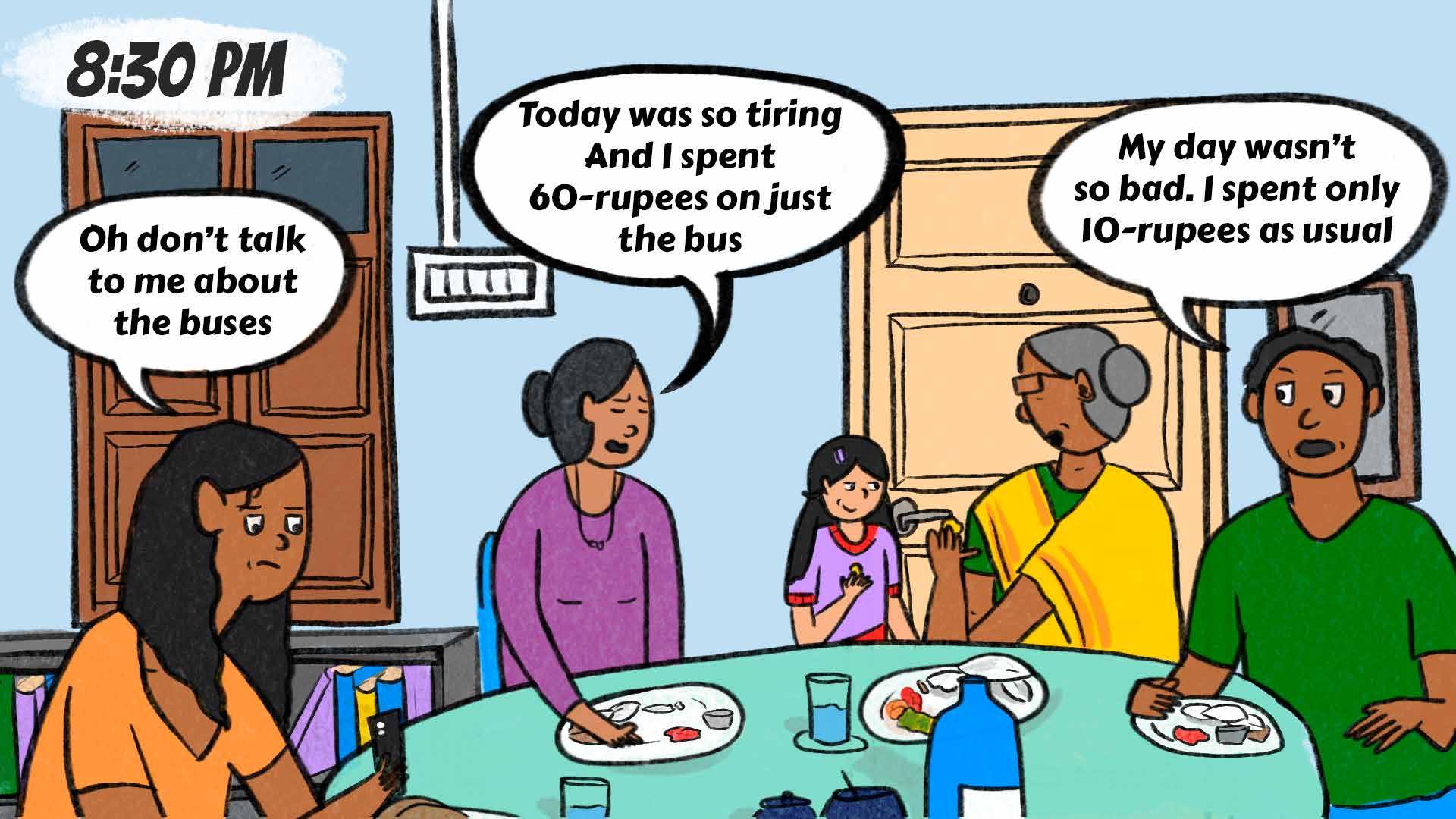
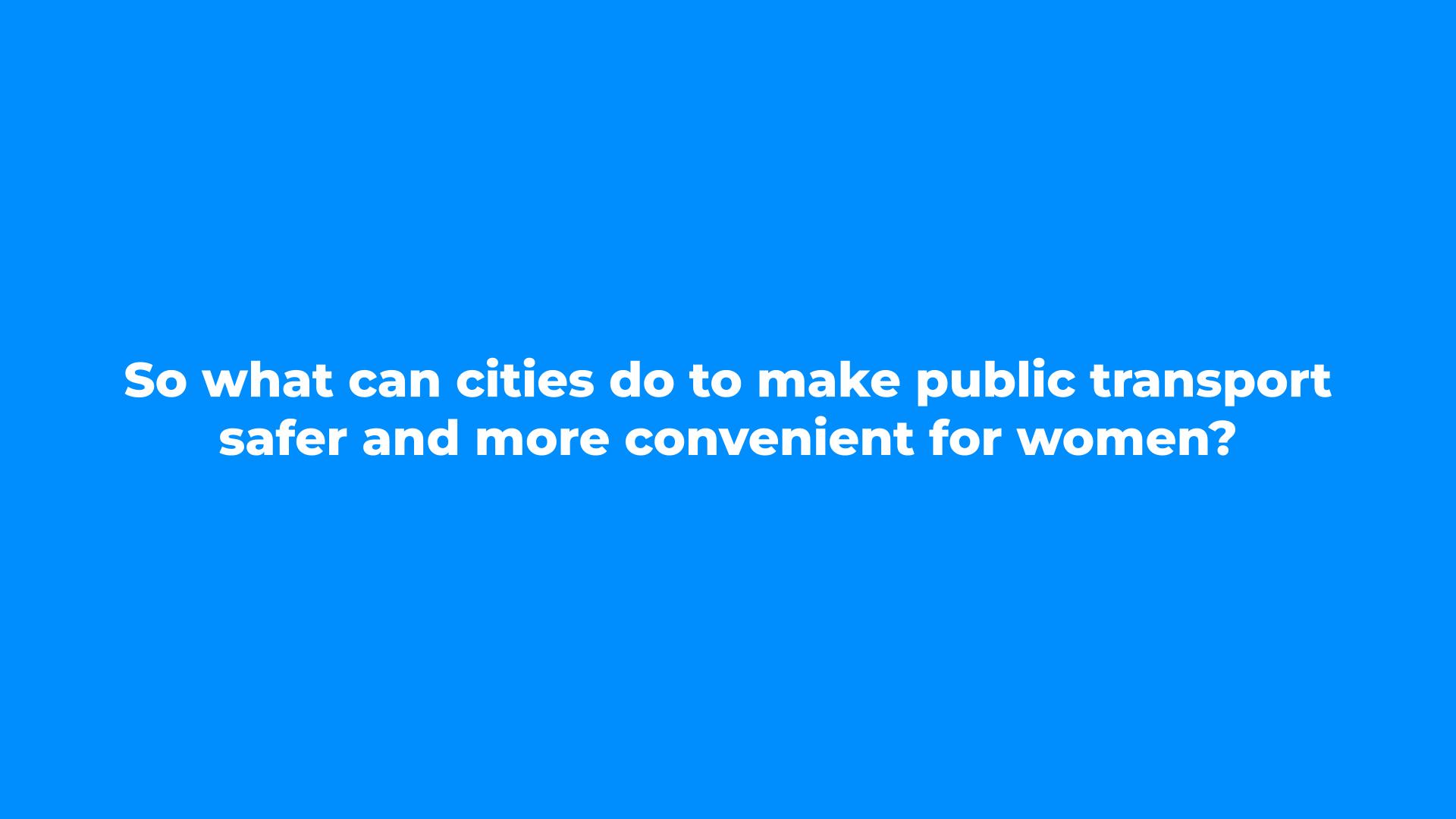




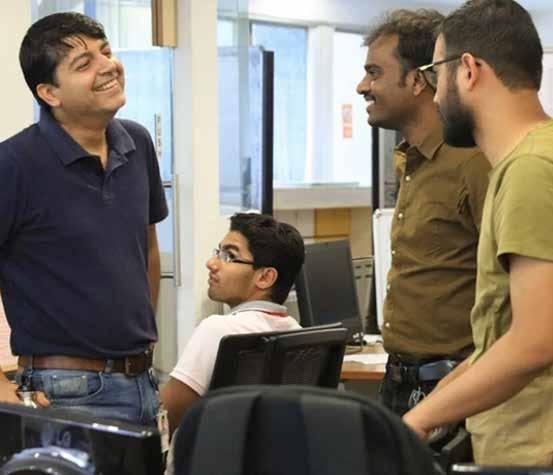
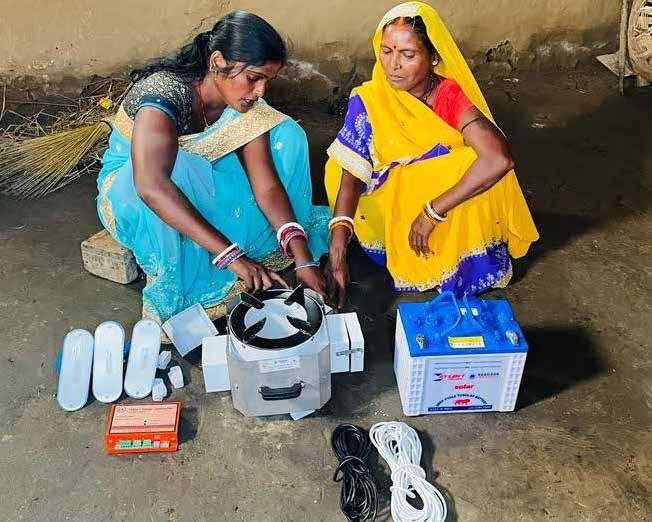
The impacts of climate change pose real and imminent dangers, especially to the poor and vulnerable. The World Bank has been working in the state of Meghalaya to address this issue, through local engagement to achieve scaling-up sustainable forest landscape and ecosystem solutions to enhance development, climate, and biodiversity outcomes.
Learn more:
Bringing Prosperity by transforming the Forests Landscape of Meghalaya
Accelerating the use of digital technologies is key for boosting productivity and advancing economic growth. In India, the number of users engaging in online commerce transactions is estimated to be over 200 million. Expanding business digitization and Businessto-Business (B2B) transactions would be key in the country’s efforts to grow the digital economy towards the expected $1 trillion size before the end of this decade.
Learn more:
Productive Technology: How a startup revolutionized Indian B2B commerce for the manufacturing sector
A pilot project in Bihar is introducing smokeless cookstoves that is helping women lead better healthier lives and reducing air pollution. In addition, women entrepreneurs are being trained to run solar marts providing households with clean energy products like solar powered fans and light bulbs.
Learn more:
Women Entrepreneurs in Bihar Help Improve Air Quality through Cleaner Cookstoves

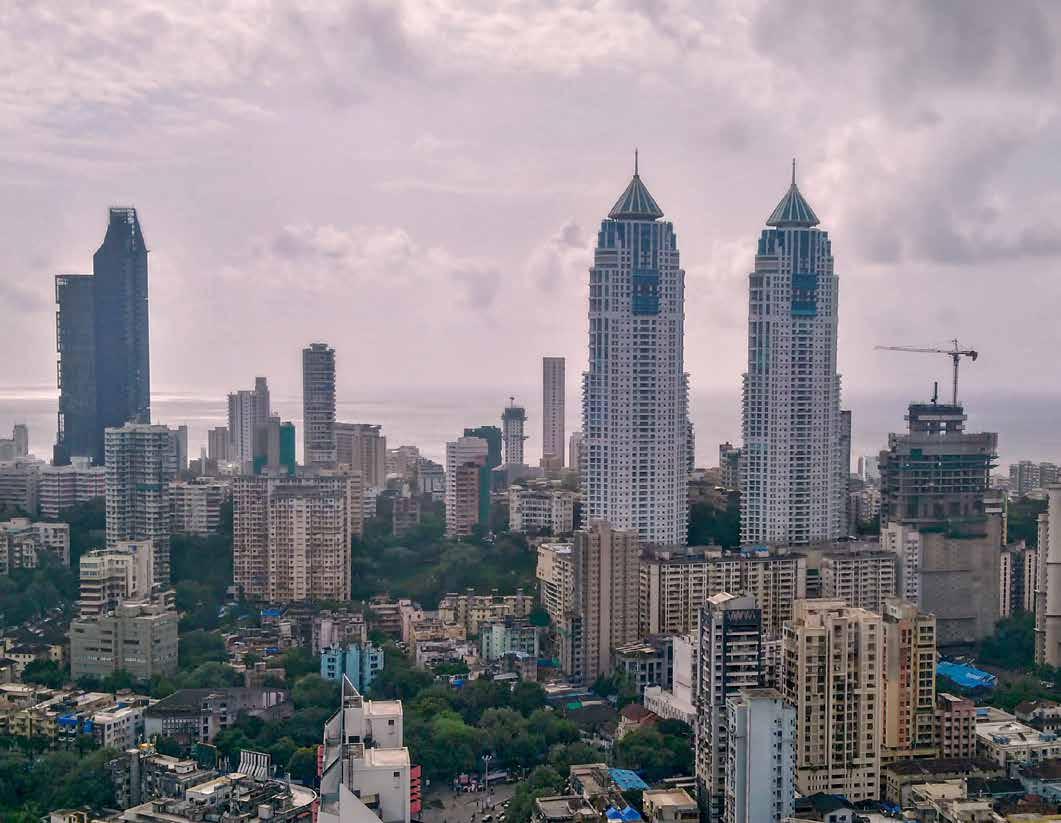

A safe, efficient, and affordable public transport is a clear need for the cities of the developing world. The Government of Tamil Nadu, with support from the World Bank, devised a comprehensive strategy to transform the city’s bus services into a world-class, customer-centric, and sustainable enterprise, under the World Bank’s ‘Chennai City Partnership’.
Learn more:
Transforming Chennai’s Bus Services
If India is to realize its dream of becoming a developed economy by 2047, it will need to attract private capital to stay competitive. Now with India's inclusion in JP Morgan's Global EM Bond Index, more government bonds can be bought by foreign investors, a larger share of domestic financial resources will be available for investment in avenues beyond Government Securities, freeing up domestic capital for investment by the private sector.
Learn more:
India's 'Bond' with the World
An aspiration "to get rich" is widely shared across developing countries who are setting national deadlines to become developed economies: China by 2035, Vietnam by 2045, India by 2047. In the absence of a miracle, their chances of success are slim—because of a distinctive affliction that strikes countries as they climb the income ladder. Economic growth in developing countries tends to level off during the middle-income stage. It’s what the World Bank calls “the middle-income trap.”
Learn more:
What China and India must do to join the rich club

The World Bank has approved $1.5 billion in financing for a second operation to help India accelerate the development of low-carbon energy. The operation will be promoting the development of a vibrant market for green hydrogen, continuing to scale up renewable energy, and stimulating finance for low-carbon energy investments.
The Second Low-Carbon Energy Programmatic Development Policy Operation – the second in a series of two operations similar in size – is supporting reforms to boost the production of green hydrogen and electrolyzers, critical technology needed for green hydrogen production. The operation is also supporting reforms to boost renewable energy penetration, for instance, by incentivizing battery energy storage solutions and amending the Indian Electricity Grid Code to improve renewable energy integration into the grid. The operation will also support steps to further develop a national carbon credit market .
In June 2023, the World Bank approved the $1.5 billion First Low-Carbon Energy Programmatic Development Policy Operation which supported the waiver of transmission charges for renewable energy in green hydrogen projects, the issuance of a clear path to launch 50 GW of renewable energy tenders annually and creating a legal framework for a national carbon credit market.
Results expected:
• Production of around 450,000 tons of green hydrogen from FY25/26
• Production of 1500 MW of electrolyzers from FY25/26
• Reductions in emissions by 50 million tons per year
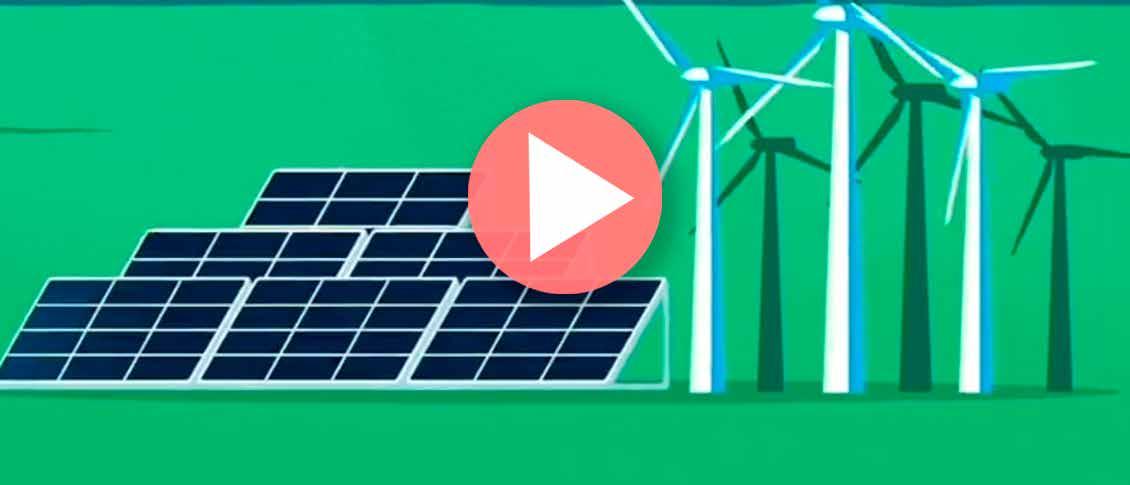
India's Transition to Green Energy

The World Bank has approved a new project that will help to increase incomes for 40,000 farmers in the hill state of Uttarakhand, by encouraging them to adopt climate resilient systems such as water conservation and drainage management, high-quality seeds, and crop diversification.
The $96.2 million Uttarakhand Climate Responsive Rainfed Farming Project will also help to provide real-time crop advisories and support 7,000 small and marginalized farmers, including womenheaded households. The Project will help to increase agriculture productivity across 48 ,000 hectares in the state for selected crops and vegetables such as millets, capsicum and peas.
It will also help to rejuvenate spring-sheds – water bodies with layers of rock and soil which supply water through an integrated system – across eight districts

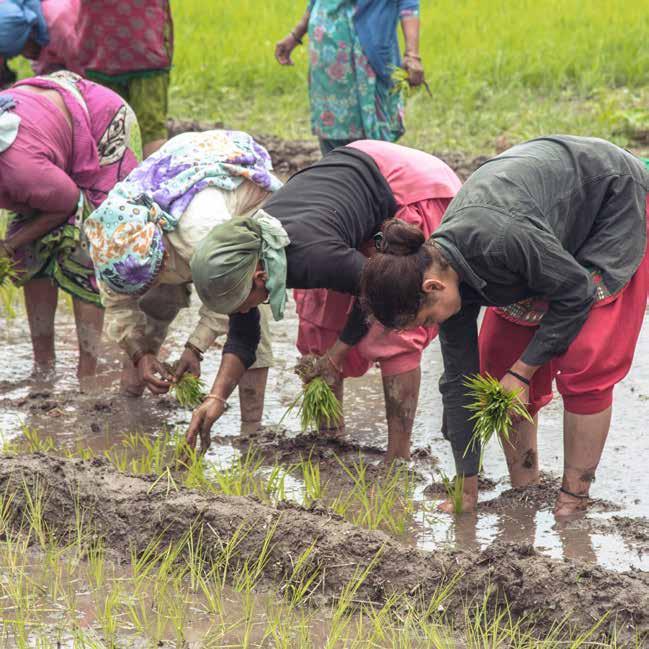
in the state. These spring-sheds will distribute water consistently through the year. The Project will also help in precision farming, which combines technology and data analysis to improve efficiency and productivity.
The World Bank has approved a new project to strengthen skills and entrepreneurship training for more than 300,000 youth to gain access to better jobs in the state of Maharashtra. The state will set up 53 Industrial Training Institutes (ITIs), including 15 institutes for women, to increase female labor force participation.
The $195 million Development of Applied Knowledge and Skills for Human Development in Maharashtra (DAKSH) Program will support high-quality skills training, improve the market relevance of skills programs, and set up centers of excellence to enable skills upgradation.
The Program will support the Maharashtra State Skills University with flexible multi-entry and exit options to help

trainees in their career path. More than 170,000 individuals will be placed in apprenticeships, more than 160,000 youth will be trained, and the program will integrate institutions under the Skills, Employment, Entrepreneurship, and Innovation Development (SEEID) into a cohesive network.


Middle-income countries are in a race against time. Many of them have done well since the 1990s to escape low-income levels and eradicate extreme poverty. However, with aging populations, growing protectionism, and escalating pressures to speed up the energy transition, today’s middle-income economies face ever more daunting odds. To become advanced economies despite the growing headwinds, they will have to make miracles.
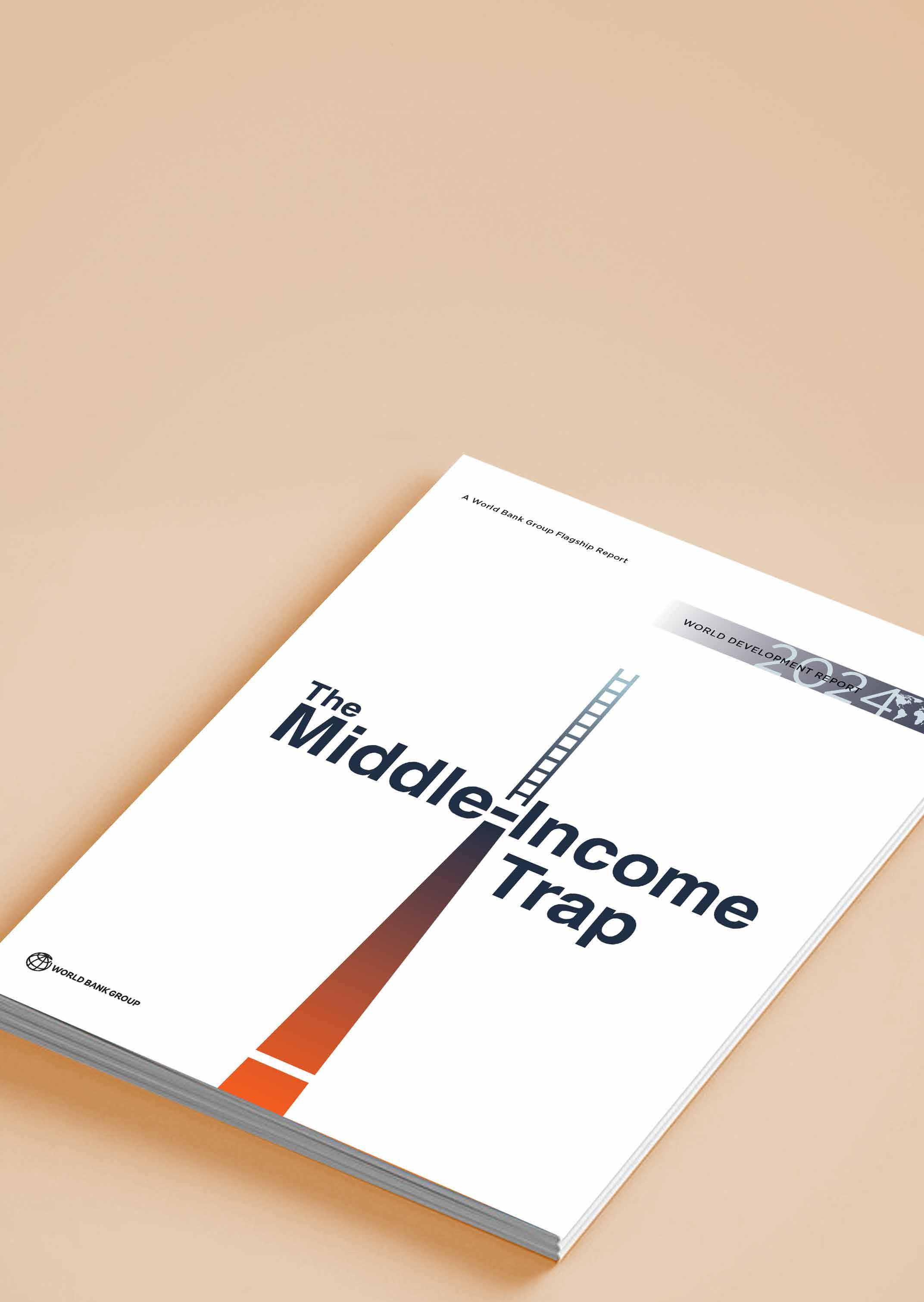
World Development Report 2024 identifies pathways for developing economies to avoid the “middle-income trap.” Lowermiddle-income countries must go beyond investment-driven strategies—they must also adopt modern technologies and successful business practices from abroad and infuse them across their economies. Uppermiddle-income countries need
to accelerate the shift to innovation, by pushing the global frontiers of technology. This requires reconfiguring economic structures governing enterprises, labor, and energy use—in ways that enable greater economic freedom, social mobility, and political contestability.

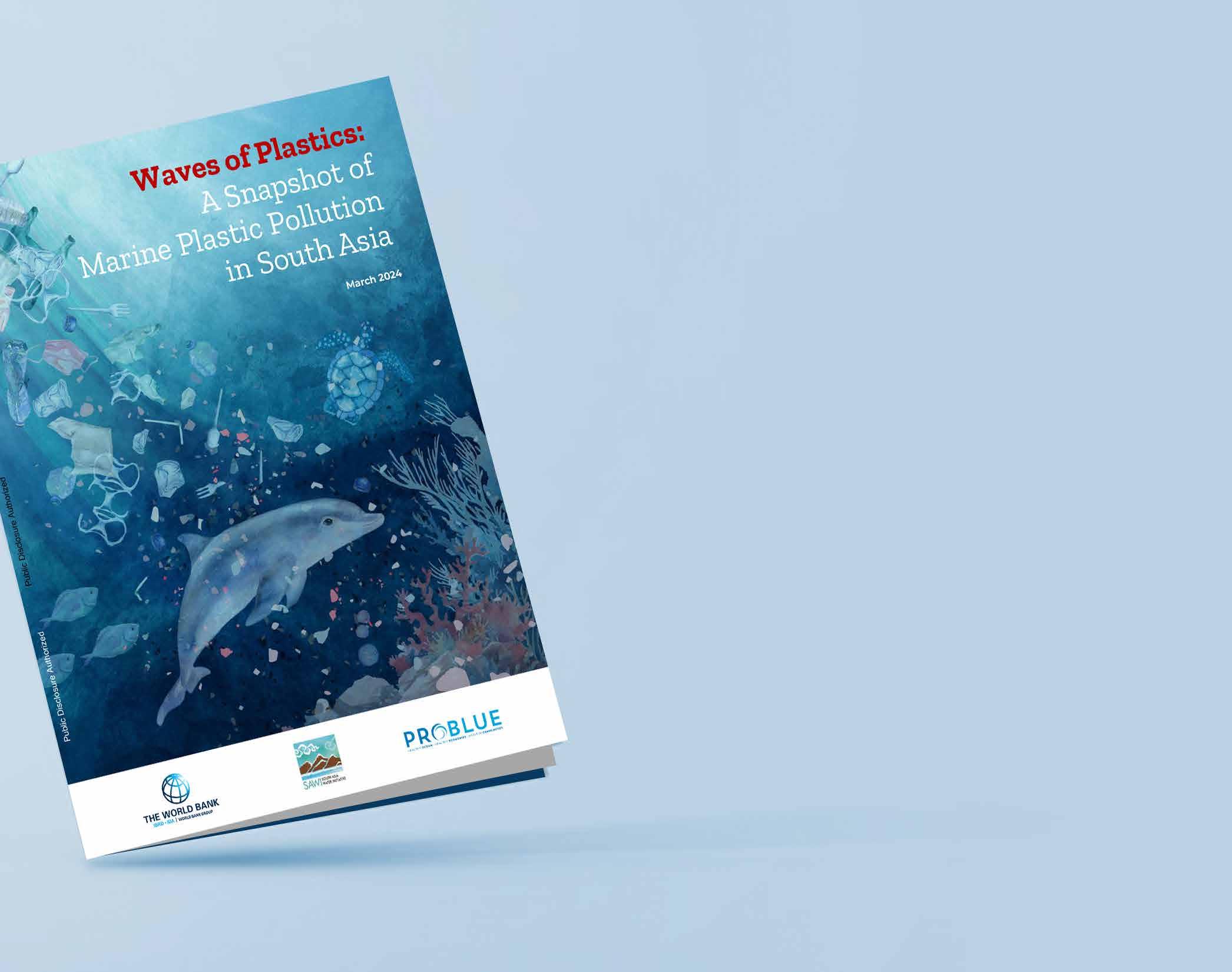
Global Economic Prospects is a World Bank Group Flagship Report that examines global economic developments and prospects, with a special focus on emerging market and developing economies, on a semiannual basis (in January and June). Each edition includes analytical pieces on topical policy challenges faced by these economies.
Progress toward prosperity occurs when governments put in place policies that foster
The South Asian region faces pressing environmental concerns such as air pollution, biodiversity loss, and the degradation of land and water resources, compounded by the challenges of meeting the needs of growing populations. Six of the eight South Asian countries share twenty major rivers, facilitating the transport of pollution across borders, including solid waste and microplastics.
The study sheds light on inadequate waste management across urban and rural areas in the region, particularly the detrimental impact of
plastic pollution, especially single-use plastics, on the environment and human health. The report seeks to establish a comprehensive baseline of plastic waste flow into water bodies in the region and support the formulation of evidencebased policies and strategies for plastic pollution reduction and a transition toward a regional circular economy framework for plastics. The report emphasizes the importance of coordinated efforts and improved policy implementation to effectively reduce plastic consumption, manage plastic waste, and mitigate marine pollution across South Asia.
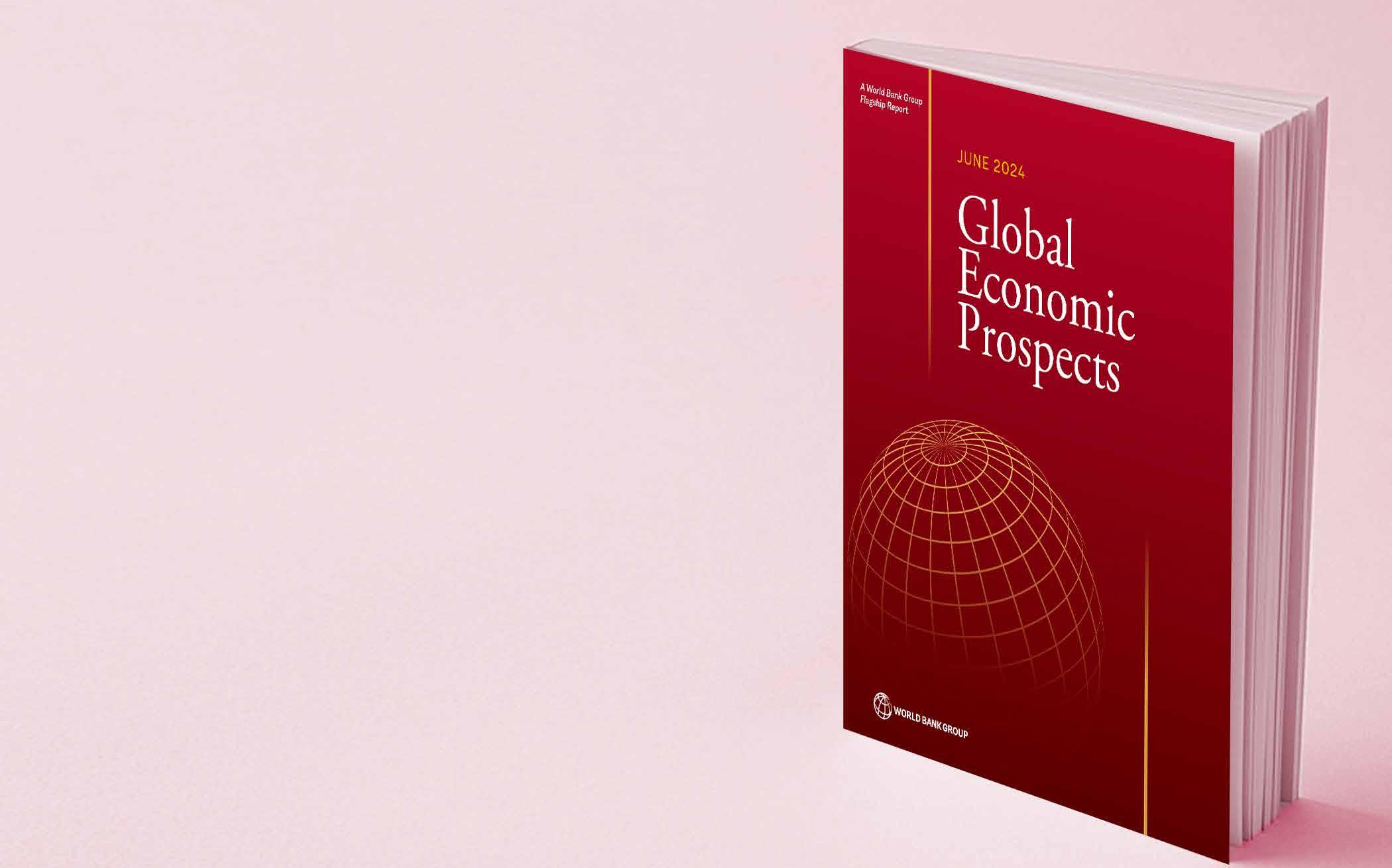
productivity, entrepreneurship, and innovation—and when they do so in a setting of closer international cooperation.
This edition of Global Economic Prospects offers a sobering assessment of the extent to which that model of international cooperation has been fracturing—and what it will take to retool it for the needs of this decade and the next.
The Container Port Performance Index (CPPI) measures the time container ships spend in port, making it an important point of reference for stakeholders in the global economy. These stakeholders include port authorities and operators, national governments, supranational organizations, development agencies, and other public and private players in trade and logistics. The index highlights where vessel time in container
ports could be improved. Streamlining these processes would benefit all parties involved, including shipping lines, national governments, and consumers.
This fourth edition of the CPPI relies on data from 405 container ports with at least 24 container ship port calls in the calendar year 2023.
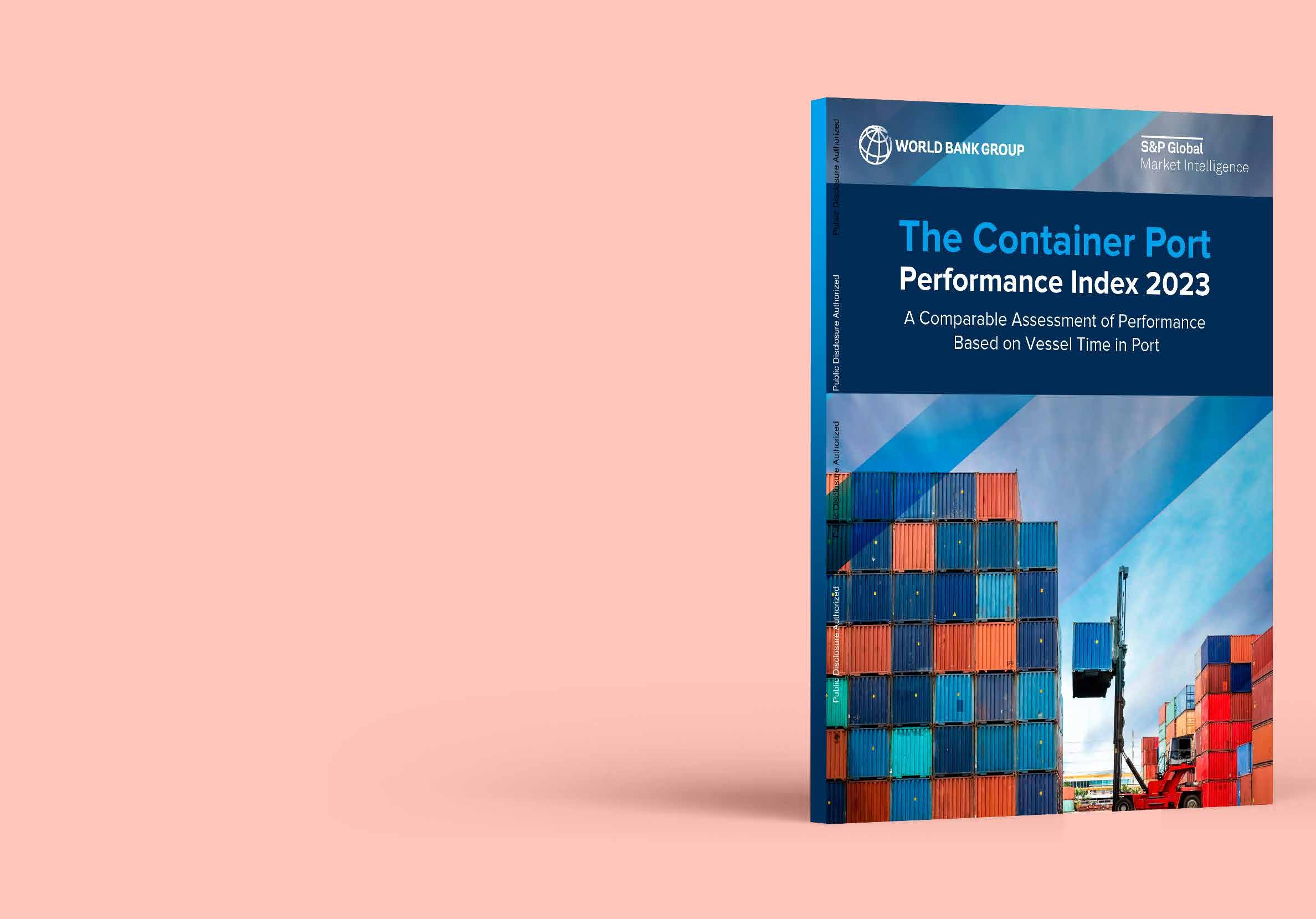

Health care systems must be prepared to address the expanding and complex needs of an aging population. Rather than a “silver challenge,” this situation should be seen as an opportunity to reevaluate and reorganize the health care delivery system holistically.
"Silver Opportunity Case Studies" presents a comprehensive examination of care for older adults in diverse economic and geographic contexts through a collection of country and regional
case studies. The book provides a deeper understanding of the complexities involved and highlights key issues and current practices at the country level. The overarching goal of the volume is to inform policy makers, health care professionals, and other stakeholders about effective practices for caring for older adults and to support the development of evidence-based policies that enhance their health and wellbeing.


The global agrifood system has been largely overlooked in the fight against climate change. This Report offers the first comprehensive global strategic framework to mitigate the agrifood system’s contributions to climate change, detailing affordable and readily available measures that can cut nearly a third of the world’s planet heating emissions while ensuring global food security. These actions, which are urgently needed, offer three additional benefits: improving food supply reliability, strengthening the global food system’s resilience to climate change, and
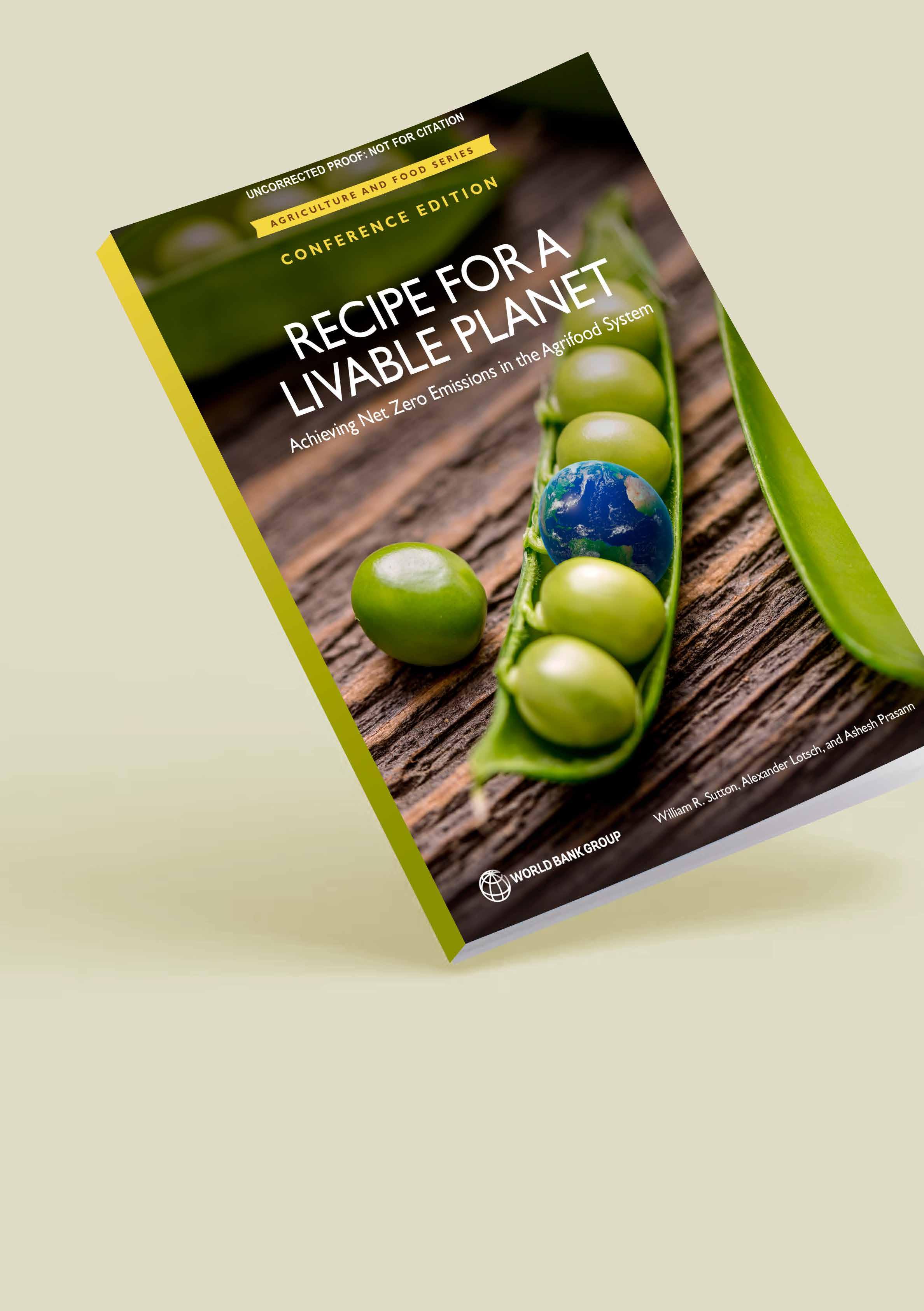
safeguarding vulnerable populations. This practical guide outlines global actions and specific steps that countries at all income levels can take starting now. Calling for collaboration among governments, businesses, citizens, and international organizations, it maps a pathway to making agrifood a significant contributor to addressing climate change and healing the planet.
WPS10856
Does Climbing the Jobs Ladder Promote Poverty Reduction ?
WPS10854
Electricity Transition in MFMod : A Methodological Note with Applications
WPS10855
Trade Policies Mix and Match : Theory and Evidence
WPS10853
A Comparative Analysis of Financial Sector Reforms and Policies in Countries Exiting Fragility
WPS10852
Know Thy Foe : Information Provision and Air Pollution in Tbilisi
WPS10850
Financial Development and Fragility : A Clustering Analysis
WPS10848
The Fertility Impacts of Development Programs
WPS10841
Cultivating Collaboration through Joint Participation : Evidence from a Video-Based Nutrition-Sensitive Agricultural Extension Program in Ethiopia
WPS10840
The Impact of Submarine Cables on Internet Access Price, and the Role of Competition and Regulation
WPS10839
A Metric of Global Maritime Supply Chain Disruptions
WPS10838
Mobilizing Private Capital for the Sustainable Development Goals
WPS10837
Voting when Rankings Matter
WPS10836
Measuring the Upper Tail of the Income and Wealth Distributions
WPS10835
Making Time Count
WPS10833
Economic and Policy Analysis for Emission Reduction from the Brick Industry in Nepal
WPS10832
Social Protection and Youth
WPS10831
Making the Market Access Countries’ Debt Sustainability Framework Relevant for Emerging Markets
WPS10829
Local Labor Market Dynamics and Export Shocks
WPS10828
Frontiers in Small Area Estimation Research
WPS10825
Understanding Vulnerability to Poverty and Natural Disasters in Latin America and the Caribbean
WPS10824
How Culturally Wise Psychological Interventions Help Reduce Poverty
WPS10822
Estimating Extinction Threats with Species Occurrence Data from the Global Biodiversity Information Facility
WPS10821
Revisiting Global Biodiversity
WPS10820
What Happens When the State Is Bossing around Markets?
WPS10819
Debt Relief for Households in Developing Economies
WPS10815
The Rising Concentration of Foreign Direct Investment
WPS10814
From Access to Achievement
WPS10813
Setting Poverty Lines for Consumption-Based Welfare Measures
WPS10812
The Effect of Pricing Instruments on CO2 Emissions
WPS10810
Women’s Labor Force Participation in Nepal
WPS10808
The Influence of COVID-19 on Young Women’s Labor Market Aspirations and Expectations in India
WPS10806
Trade Effects of Industrial Policies
WPS10805
Distributional Effects of Taxation of Processed Foods in Brazil
WPS10803
Virtual Windows Through Glass Walls?
WPS10800
Multidimensional Well-Being Measurement Practices
WPS10797
Firm Adaptation to Climate Risk in the Developing World
WPS10796
The World Bank’s New Inequality Indicator
WPS10794
Measuring Green Jobs
WPS10793
Two Hundred and Fifty-Thousand Democracies
WPS10792
Bridging the Gap in Trade Reporting
WPS10790
Policies for Aspirations. And Opportunities
WPS10789
Intra-national Trade Costs in Low and MiddleIncome Countries
WPS10788
Empowering Change
WPS10786
Distributional Crowding Out Effects of Public Debt on Private Investment in Developing Economies
WPS10785
Infrastructure Complementarities and Local Economic Growth
WPS10784
Migration, Growth, and Poverty Reduction in Rural China
WPS10783
What Drives Citizens’ Trust in State Institutions ?
Large-Scale Survey Evidence on Process and Outcome-Based Trust in Morocco
WPS10782
Production Networks and Firm-level Elasticities of Substitution
WPS10781
Place-Based Preferential Policies and Firm Performance
WPS10779
Profiling Green Jobs and Workers in South Africa : An Occupational Tasks Approach
WPS10777
Did the 2022 global energy crisis accelerate the diffusion of low-carbon technologies?
WPS10776 Heat and Law Enforcement
WPS10775
Geographic Imbalance, Search Frictions, and Regulation : Causes of Empty Miles in Freight Trucking
WPS10774
Understanding Firm Networks in Global Agricultural Value Chains
WPS10773
Closing the Gaps : The Role of Screening Questions and Self-Reporting in Measuring Women’s and Youths’ Employment and Work
WPS10772
From Survey to Big Data : The New Logistics Performance Index
WPS10770
Electricity Reliability and Intra-Sectoral Structural Change in Sub-Saharan Africa : Evidence from Medium-Sized Manufacturing Firms
WPS10771
The Role of Technology in Reducing the Gender Gap in Productivity
WPS10769
Gender, Social Support, and Political Speech : Evidence from Twitter
WPS10767
FTT-FLEX : Flexible Technology Diffusion Analysis Tool for Data Poor Countries
WPS10765
Thriving beyond Borders ? Understanding Refugee Children’s Life Outcomes
WPS10764
Early Learning in South Punjab, Pakistan: Investigating Child Development and Classroom Quality
WPS10763
Ensuring an Equal Start for All Pakistani Children: What Will It Cost ?
WPS10762
Hotter Planet, Hotter Factories : Uneven Impacts of Climate Change on Productivity
WPS10761
Rules and Regulations, Managerial Time and Economic Development
WPS10760
Droughts Worsen Air Quality by Shifting Power Generation in Latin America and the Caribbean
WPS10759
A Global Incentive Scheme to Reduce Carbon Emissions
WPS10758
Comparative Analysis of AI-Predicted and Crowdsourced Food Prices in an Economically Volatile Region
WPS10755
Soft Skills, Competition, and Hiring Discrimination
WPS10753
Why Look at Tasks When Designing Skills Policy for the Green Transition ? A Methodological Note on How to Identify Green Occupations and the Skills They Require
WPS10752
Refugee Education Financing : Key Facts and Findings — Insights into the Financing of Refugee Education in Low- and Middle-Income Countries
WPS10751
Leveraging Growth Regressions for Country Analysis
WPS10749
Reconstructing 2010–2022 Poverty and Inequality Trends in Bangladesh : A Statistical Matching Approach
WPS10748
Multidimensional and Specific Inequalities
WPS10747
Understanding the Links between Diet Quality, Malnutrition, and Economic Costs : An Evidence Review for LMICs
WPS10746
Do Patients Value High-Quality Medical Care ?
Experimental Evidence from Malaria Diagnosis and Treatment
WPS10744
What Works in Supporting Women-Led Businesses ?
WPS10743
How Delayed Learning about Climate Uncertainty Impacts Decarbonization Investment Strategies
WPS10742
Climate Shocks and the Poor : A Review of the Literature
WPS10741
The Sovereign Spread Compressing Effect of Fiscal Rules during Global Crises
WPS10738
Using Survey-to-Survey Imputation to Fill Poverty Data Gaps at a Low Cost : Evidence from a Randomized Survey Experiment
WPS10737
Linking Export Activities to Productivity and Wage Rate Growth
WPS10734
Overcoming Left-Behindedness : Moving beyond the Efficiency versus Equity Debate in Territorial Development
WPS10729
Climate Change Adaptation : What Does the Evidence Say ?
WPS10728
Lives, Livelihoods, and Learning : A Global Perspective on the Well-Being Impacts of the COVID-19 Pandemic
WPS10724
Climate Immobility Traps : A Household-Level Test
WPS10719
Environmental Policy under Weak Institutions
WPS10717
Reviewing Assessment Tools for Measuring Country Statistical Capacity
WPS10716
Cross-Country Empirical Analysis of GovTech Platforms on Citizen Engagement
World Bank
70, Lodi Estate
New Delhi - 110 003
Tel: +91-11-4147 9301
18-20 Kasturba Gandhi Marg New Delhi - 110 001
Tel: +91-11-4924 7601
Contact
General information
indiainfo@worldbank.org
Media Inquiries mediaindia@worldbank.org
For more Information
Global: www.worldbank.org
India: www.worldbank.org/in
: WorldBankIndia
: @WorldBankIndia
Rights and Permissions: The material in this work is copyrighted. No part of this work may be reproduced or transmitted in any form or by any means, electronic or mechanical, including photocopying, recording, or inclusion in any information storage and retrieval system, without the prior written permission of the World Bank. The World Bank encourages dissemination of its work and will normally grant permission promptly.